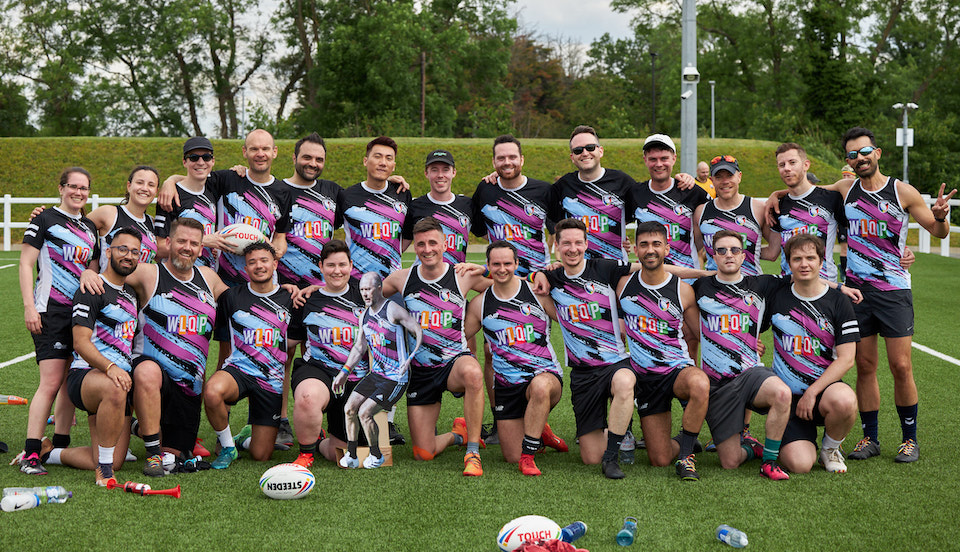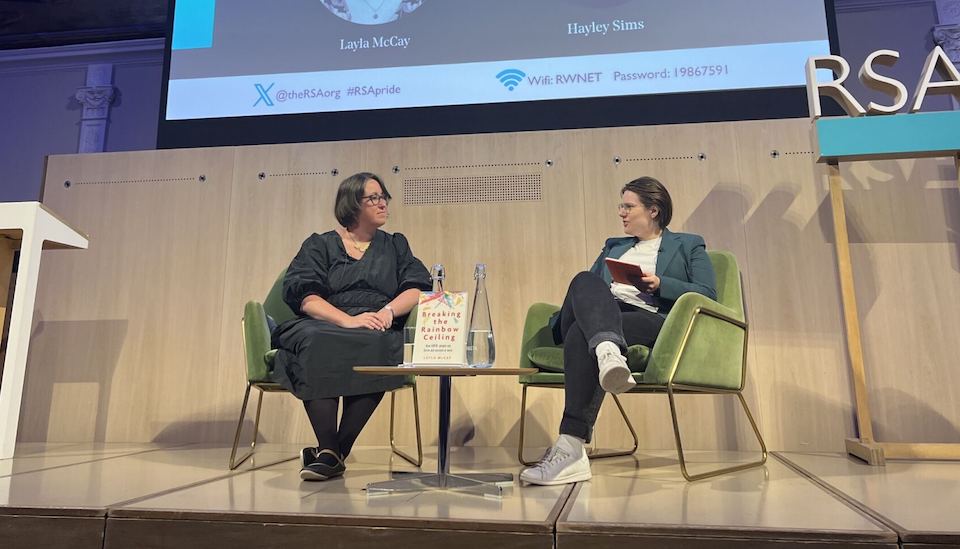The RSA report published last week, ‘Move Fast and Fix Things’, featured the work of the CivTech® Programme as an approach to driving innovation through the public sector in Scotland. Part of the Scottish Government’s Digital Directorate, its mission is to “drive daring and innovation in the public sector by collaboratively solving challenges that make people’s lives better”. CivTech® brings together public sector expertise and private sector creativity to solve real problems, develop new products, and deliver better, faster and easier services for citizens. In this guest blog CivTech® founder, Alexander Holt, speaks to what has made this award-winning programme successful.
In October 2015, I sketched out a vision for a new way of public service delivery, borne of the experience of an entrepreneur and then running tech procurements for government. My idea drew on concepts that were tried and tested, such as ‘challenges’ and accelerators, but that hadn’t been put together in one flow.
That as procurers, we should move to a challenge-oriented procurement model; open up to innovative tech talent through phased contracts (such as SBRI, architecture competitions); co-locate companies and challenge sponsors into an accelerator programme ensuring we involved citizens, academia, third sector and investors in the design, delivery and scale of public services; and that the public sector should be a springboard for innovative and exportable technologies tackling global problems (classic Mazzucato). But at a more pragmatic level – the problem I was facing as a public sector procurer was this: when technology moves so quickly, how could we procure what we didn’t know existed?
Whilst the authorising environment was receptive (in spite of my comment that 50% of this would fail), it still took 146 meetings between January and June 2016 to get CivTech® off the ground; knocking on doors internally within SG, with broader public sector partners, and the academic and tech communities to build and launch the proposition with our first six challenges.
Nearly three years on, with tens of thousands of hours under our belts, it’s an opportunity to distil to a few ingredients what has made this award-winning programme a success, much of which resonates with the RSA’s report ‘Move Fast and Fix Things’.
Six Reasons For Success
First up, the culture of the team. To echo, “Move Fast and Fix Things”, the entrepreneurial mindset – that notion of creating value and urgency of action - can be found in any sector, private, public or third. (Though having private sector experience is not the same as being entrepreneurial.) I was fortunate in attracting people to the team who had an unusual mix of deep private and public sector experience and first-hand experience of running tech businesses, accelerators and curating start-up systems. Underpinning our culture was a resilience, persistence and urgency to start today to get lessons tomorrow even if things weren’t perfectly in place – the ability to safe/fail and continuously learn.
Second, we were extremely fortunate with our first set of challenge sponsors. Carol Sinclair from NHS NSS (now x4 sponsor and on our advisory board), Jo Blewett from Transport Scotland and Stewart Prodger from Scottish Environmental Protection Agency were sufficiently seeking, curious and daring to try a new way of procurement and delivery and give us a punt. Moreover, they were prepared to spend time to articulate the problem and get their heads away from solutionising. And then they were prepared to understand the difference between legislation, rules and guidance. Their success (savings, awards, career opportunities) helped pave the way for the next two cohorts.
Third, by running in cohorts of 6-10 challenges with set fast-moving timescales, there is safety in numbers. Not only are there comparable shared concurrent learnings, if a challenge drops or a company fails, there are still sufficient numbers to make it a success. This is particularly important when trialling new processes, lest a linear single ‘failure’ kybosh appetite and revert the organisation to back to conventional ways. We’re often asked, what’s the difference between CivTech® and any other challenge fund? As one challenge sponsor who has experience of a variety of challenge processes put to me: “CivTech® is the scaffolding around which a successful challenge can be run because it is a comprehensive multi-layered delivery mechanism.”
Fourth, the value of a cohort is multiplied by utilising a colocation space for the companies and challenge sponsors. Housed within CodeBase (UK’s largest tech hub), CivTech® runs its Accelerator programme comprising 40 workshops on product, business and personal development. As well as facilitating access to CxOs across the public sector, a dedicated studio space enables the cross-pollination of tech, skills and expertise, not just amongst the companies but also amongst the challenge sponsors – and this “spillover” (Mazzucato) is hugely beneficial.
Fifth, being the broker, enables us to bring together public, private, third sectors, academia, investors and citizen groups where everyone plays a part in a curated manner. Blending these sectors within a studio creates an energy around the delivery of product that is rarely seen in policy making. And that’s why the notion of a space is important – you aren’t going to create public entrepreneurs simply by following a process – but you might just tilt public servants towards that mindset by immersing them in an entrepreneurial environment over six months. And we have been so lucky with the companies participating who have absolutely embraced the public sector reform agenda and their role in it.
And that is the point behind the CivTech® Intrapreneurship Leader Programme (Sixth). Feedback from challenge sponsors is such that the tools and skills acquired through the company workshop programme and the co-design and co-production process, coupled with the supportive culture from the CivTech® team, is “rewiring brains”. This immersion not only gives them the confidence to go back to their organisations and challenge conventional practices, particularly around procurement, but also confidence to spot opportunities to add public value for citizens.
Of course, there are many other factors and none of this would have been possible without an authorising environment, so thanks to Colin Cook (Director Digital) and Sarah Davidson (Director General Organisational Development and Operations). They could anticipate any potential ‘system immune response’ and provide the top cover support – essential for any public entrepreneur to thrive.
3 to 1 Procurement
So what can the wider organisation learn from innovation programmes and labs? Whilst our wins are on a small scale, it is what the wider organisation can learn that matters – the ability to absorb and cultivate the widespread adoption of innovation in product and process. With that, let’s return to procurement.
The concept of the “3 to 1 procurement” is one that I am particularly passionate about. The principles of working with three companies (and paying them) before committing to one can easily be applied to larger conventional procurements. Conventional procurements assessed from large tender responses might give an idea about capacity and capability, but not culture. And that is where many an IT delivery has gone awry. Only by working with a company, even for a short period, can you really get a sense of what they’re like. The company that is a dream on paper may well turn out to be a nightmare in reality. Now, scale this approach to conventional procurements and across the public sector better decisions will be made as to the preferred supplier. A percentage of budget, perhaps up to 10%, should made towards testing multiple solutions concurrently before committing.
Conclusion
The steps outlined in ‘Move Fast and Fix Things’ really crystallise the journey of the public entrepreneur and the change they seek to make (– thank you to Luke, Ian and Rowan for taking the time to listen). Those 146 meetings paid off. Challenges are being solved, jobs are being created, mindsets are changing. And now with interest from numerous governments, public sector organisations and international foundations around the design and implementation of CivTech-style programmes, our quest to ‘move fast and fix things’ has led to the launch of the CivTech® Academy. That’s not to say we’ve cracked this – absolutely not – but working with Scotland’s CAN DO Innovation Challenge Fund, Innovate UK and further afield, we can contribute to the making the public entrepreneur more of a norm than an anomaly, and with it, the transformation in service delivery that citizens deserve.
Related articles
-
Prosperous Places: creating thriving communities
Tom Stratton
With regional growth at the top of the agenda, it is vital that we create thriving communities across economic, social and natural perspectives. Prosperous Places is a suite of interventions aimed at responding to the unique ambitions and challenges of places.
-
Pride interview: Felipe Tozzato
Deborah Ajia
The commercial photographer and RSA Fellow explains what Pride means to him, the importance of courage, making friends through rugby and why being gay is his superpower.
-
Let's smash the Rainbow Ceiling
Ben Oliver
Reflecting on Layla McCay’s recent RSA talk, Ben Oliver offers five ways for employers to create a positive culture for their LGBTQ+ staff that benefits both the individual and the organisation.




Be the first to write a comment
Comments
Please login to post a comment or reply
Don't have an account? Click here to register.